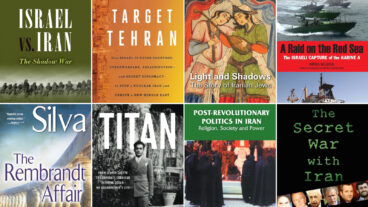Mandy Patinkin raises his bike in triumph in Eilat, Israel after completing a 265 mile, six-day ride to benefit an environmental coexistence program in southern Israel. (Photo: Rebecca Guber) Film and TV star Mandy Patinkin was among the 100 cyclists from the US who, on Monday, completed a 265-mile six-day bike ride from Jerusalem to Eilat – all to benefit a unique environmental program in Israel that unites Israeli, Palestinian, Jordanian and American students.
This year’s fourth annual ride, subtitled ‘Cycling for Peace, Partnership and Environmental Protection,’ raised a record breaking $365,763 for environmental education and advocacy in Israel and the Jewish community in the US.
The ride, sponsored in part by the Jewish National Fund, brought together an exceptionally diverse group of people including Jewish and Arab Israelis, Jordanians and a Palestinian, as well as the Americans.
Patinkin, 52, who rode with his son Isaac, was in Israel for the first time in 20 years.
“Listening to Palestinians and Jews, Germans and Americans, discussing something of common concern – the environment – made me believe that this was the key to solving the peace process,” said Patinkin. “We can achieve the impossible.”
The Ride is a partnership of New York based Hazon, which founded a series of Jewish environmental bike rides in 2000, and the Ride’s main beneficiary, the Arava Institute for Environmental Studies (AIES). The Institute is a regional center for environmental leadership located on Kibbutz Ketura in Israel’s Arava Valley – near the Jordanian and Egyptian borders and the Gulf of Aqaba/Eilat. By encouraging environmental cooperation between peoples, the Arava Institute is working towards peace and sustainable development on a regional and global scale.
David Lehrer, executive director of AIES, said: “The Ride is helping to train a new generation of environmental leaders, Jordanians and Palestinians as well as Israelis, who are working together to improve the quality of life for people across the region.”
On the morning of Israel Independence Day, riders gathered on the beach in Ashkelon to learn about a pressing environmental issue in Israel, the possible development of the Nitzanim Nature Reserve. This stretch of preserved coastline is currently threatened by development due to the resettlement of Gaza settlers as part of the disengagement plan.
Dr Alon Tal, one of the founders of the Israel Union for Environmental Defense, explained that, regardless of the politics of the disengagement itself, it was vital that the disengagement not become an excuse to over-develop along Israel’s endangered coastline.
Just as the Institute strives to bring people together, the Ride itself is a model of this as well. Jews from North America were joined by 30 riders and crew, who are all institute alumni- Israeli Jews and Arabs, Jordanians, and Palestinians.
“We all learned to work and live together at the Arava Institute, and being on the Ride we can share with the other riders our experience of cooperation and coexistence,” said 27-year-old Ilana Meallem, an Arava Alumni who is currently researching waste removal issues in Bedouin villages in the Negev.
“This is my first time in Israel, and it has been eye-opening,” said rider Judith Pick, 53, from West Hartford, Connecticut. “As an American you are bombarded by media that is clearly not an accurate picture. It emphasizes such negativity and conflict, and I’ve seen that the people and cultures continue to thrive, and this is something that you must visit to really understand.”
Rabbi Michael Cohen, Executive Director of the North American office of the Arava Institute, who is spending a year at the Institute in Israel, explained that the environment was the path that would enable peace and reconciliation between Israel and its neighbors to flourish.
“While peace and reconciliation may be the ultimate goal, the primary ingredient that allows us to to work toward that end is to focus on the environment. Our environmental studies program creates a framework that allows the environment to act as the metaphor, the level playing field, and most important the glue that allows us to deal with the more difficult political issues that can not be avoided with such a constellation of students,” said Cohen.
The group took a break from their cycling at Mitzpe Ramon for a Shabbat full of singing, resting, and moments of meditation on the first three days of cycling.
To commemorate a year since overcoming prostate cancer, Patinkin, sang a moving rendition of a Yiddish folk song about a shepherd singing of his love for his land, a parallel to the experience that Patinkin was having during his time riding through Israel.
“I have always found community and spirituality when riding with a group; everyone looks out for each other. One of the reasons I am on this trip is to ride with other Jews and I think here I have found this sense of community,” he said.
“I know that this is only the beginning of a long relationship with the Arava Institute and Hazon, and connecting with a greater love for Israel, the Palestinian people, and people of all nations who come together on behalf of peace and the environment,” said Patinkin.
“We need to look at all of the positive things that are going on in Israel like the Arava Institute, and other places and projects like it,” said rider Matthew Blake, 27, from New York City. “The greatest tragedy of the second intifada is that it is a lose-lose situation. We need to really get the word out about these types of things that are really win-win situations, and can make a real difference.”












